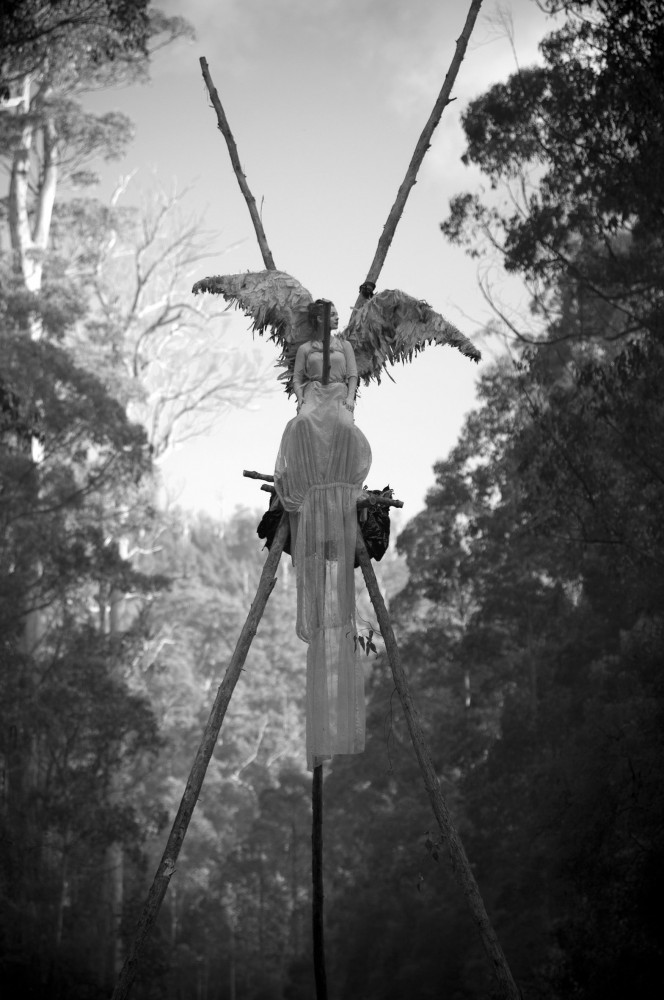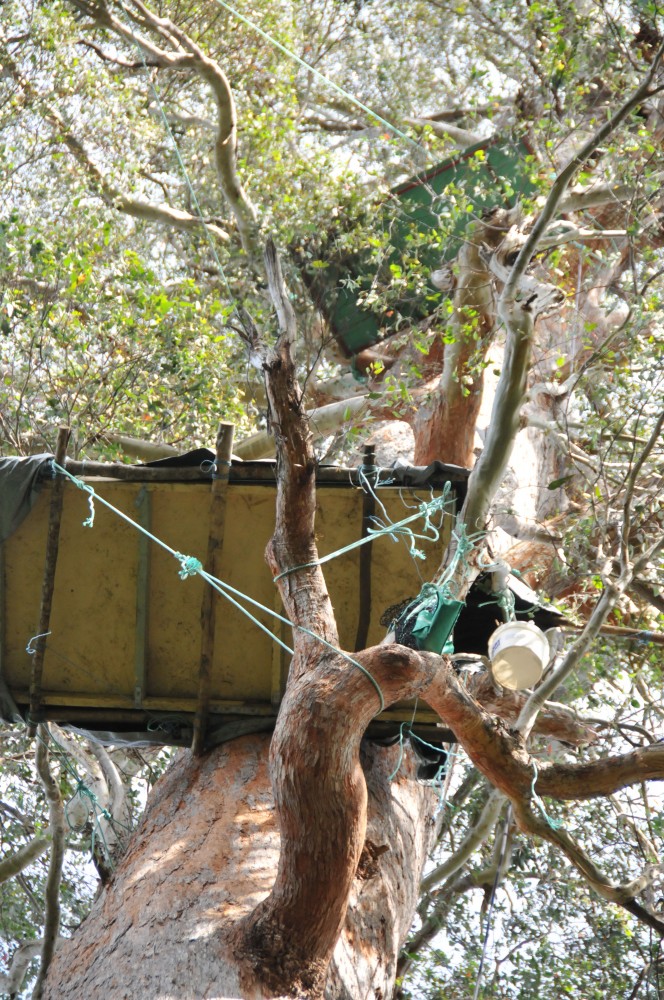Occupy the Forests
Occupy the Forests / Tree Sits & Tripods
Essay published in Desktop Magazine #290
In 1978, one of the finest rainforests in the world in the North Island of New Zealand was saved from logging by a new form of protest. Activists occupied the canopies, preventing the logging of thousand-year-old trees and the destruction of irreplaceable animal habitat, an action that led directly to the establishment of the protected Pureora Forest Park.
Today in Tasmania, industrial logging is threatening some of the world’s unique forests. The mandate to clear fell, burn and poison the earth’s last temperate wilderness areas is being challenged by tree-sitting activists.
 Weld Angel by Matt Newton. Image courtesy of Huon Valley Environment Centre.
Weld Angel by Matt Newton. Image courtesy of Huon Valley Environment Centre.
The ingenous ad hoc contraptions designed by protesters successfully delay the felling of old growth forests. This stalling buys time for legal interventions, building public awareness and political manoeuvring. The sits function simultaneously as radical industrial design enabling physical resistance, a kind of basic architecture providing accommodation in the forest canopy, and visual communication as evocative images of protest that leave the isolated forest and travel the world.
There is a duel between the industrial design of the logging corporations, the heavy machinery of annihilation, and the provisional makeshift protest structures. Small platforms are wedged high in the trees and sometimes ropes are tied to the loggers’ bulldozers and trucks, so that any operation risks the sitter’s safety. A related design strategy is the tripod used to blockade the forest. The protesters’ bodies are barriers forcing consideration that the forests are worth the risking of human life and that human life is more valuable than commercial priorities of woodchip exporters.
The construction of the platforms is improvised with simple materials such as boards, ropes and tarpaulins. As architecture, it is pure utility, but this basic habitation can accommodate sitters for weeks or months or even years. Although the sitting is usually solo, the sitters are necessarily sustained by a dedicated community providing food and drink and many other forms of support.
 Tree sit structure. Image courtesy of Huon Valley Environment Centre.
Tree sit structure. Image courtesy of Huon Valley Environment Centre.
One important task for the supporters is communication with city folk. Here, images of the sitters become symbols of resistance: potentially galvanising broader opposition as they air on news broadcasts and proliferate on blogs around the world. Video surveys of a Tasmanian devil’s nocturnal fossicking and photographs of an angel perched on a tripod become potent visual communication.
Although not typically taught in design schools, the activists are designers creating a future for the forests by resisting and witnessing their ruin. These strategies of occupation are dissent designed to directly oppose catastrophe.
+
see also The Tree-sitters: Designing a habitat on high by Charles Zuber
please consider donating to the Huon Valley Environment Centre